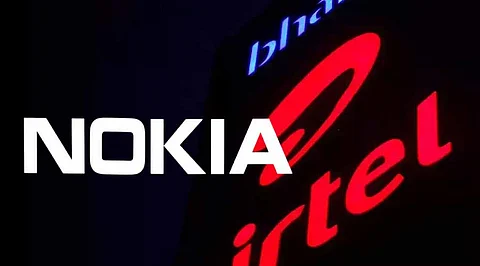

Bharti Airtel Limited commonly referred to as Airtel is among India’s largest telecom operators that has recently drawn investors’ attention due to a healthy performance of Airtel’s stock and a large deal on 5G network with Nokia. As it trades in the upward trend, investors are now asking when they should initiate the buy, hold, or sell stocks time. Now, let’s look at its financial statement, latest development, and how it looks from a technical perspective.
Bharti Airtel’s stock closed at ₹1,569.30 on November 22, 2024 and gained 2.89% in the trading session. The stock has a 52-week range of ₹ 960 to ₹ 1,779 and its YTD return is 52.88% which is far ahead to S&P BSE SENSEX 9.52%.
In the last one year Bharti Airtel has provided a spectacular 62.54% return which makes it the darling of telecom investors. The company has been good in delivering value to its shareholders as shown by its five year return of 281.91%.
Bharti Airtel’s financials reflect a mixed bag of strengths and challenges:
Revenue (TTM): ₹1.55 trillion
Net Income (TTM): ₹122.67 billion
Profit Margin: 7.89%
Return on Equity (ROE): 12.93%
PE Ratio (TTM): 75.67
Even though the firm has sound revenue and profitability proportions, its leverage proportion, expressed as a debt/equity of 204.47, appears unhealthy. However, steady constant profit margin of the company and abundant amount of free cash flow is a testimony of its operational efficiency
Airtel’s association with Nokia is a new chapter in its communication venture’s evolution. This landmark multi-billion, multi-year deal is to see Nokia’s 5G AirScale portfolio with base stations and energy-smart Massive MIMO radios.
This will help improve the 5G capability and reach of Airtel while improving its current 4G network, as per this link. Nokia’s additional tools that are based on artificial intelligence will enhance the ways of network management.
The deal can contribute toward creating an environment friendly network with improved connectivity to offer best in class network to customers and to meet the future requirements of Bharti Airtel Limited to the greatest extent.
The price pattern that has dominated Bharti Airtel’s chart is highly bullish. After reaching its 52-week high of ₹1,779 in September 2024, the stock retraced to ₹1,530, where it found strong support from an ascending trendline and a horizontal support level.
At the moment the stock has been rejected and has found support at this double support zone and is in a position to revisit the new higher level of ₹1,779. The longer-term outlook remains friendly with the next major resistance and target seen at the prior high.
Strong Market Leadership: India’s telecom market is dominated by one of the frontline telecom companies known as Bharti Airtel.
Innovative 5G Expansion: The Nokia deal makes Airtel a market leader in 5G technology.
Robust Stock Performance: For instance it has exhibited better performance against the benchmarks such as the SENSEX.
High Valuation: The existence of PE ratio 75.67 means that this stock is expensive relative to its earnings.
Debt Levels: Debt ratio results in exposure to fiscal risks when they are high and there is more emphasis on this ratio in equity analysis.
Competitive Market: From the side of Vodafone Idea and Reliance Jio the strong competition could affect the margins.
New growth plans, improved and stable financials, and strong technical signals make this giant a fix for investment. However, its high valuation and debt warrant caution.
Recommendation: Buy Purchase for those investors willing to hold for significant years based on the 5G narrative. Hold for those who prefer better entry points.
For instance, the new 5G expansion agreement with Nokia gives Bharti Airtel greater dominance in India’s telecom industry. Despite seemingly being overvalued even though the forward price to earnings ratio is above the industry or market average, this stock is an excellent long term hold given its growth prospects and its presence in the market.
Before approaching the market and choosing a position, pay attention to levels as well as other factors in the market.
